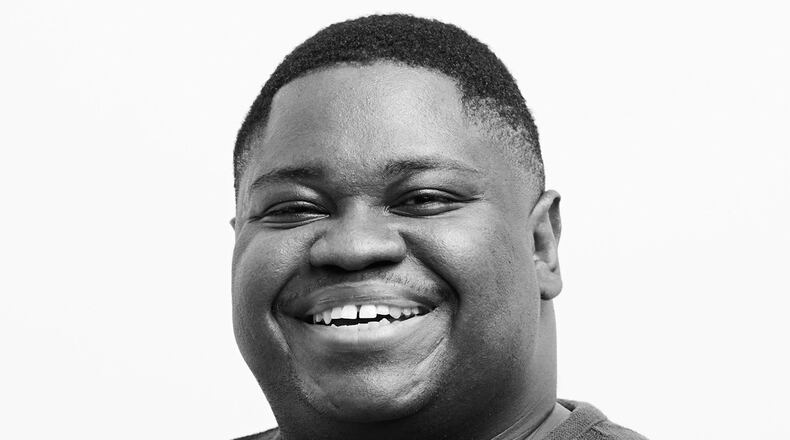Afrofuturism, a term that dances on the edge of the speculative, invites us to dream beyond the constraints of time and space.
“Afrofuturism is an intersection of imagination, technology, the future, and the past,” says Misha Green, the creative force behind the groundbreaking HBO show “Lovecraft Country.”
It’s not just a movement; it’s an inquiry into our identity, a philosophical exploration of where we’ve been and where we’re heading.
As we traverse the corridors of Dayton’s artistic history, the canvases of Pippin and the delicate prints of Hopkins emerge as portals to contemplation. Pippin, a self-taught maestro, paints not just scenes but emotions. In “The End of the War: Starting Home,” the aftermath of World War I unfolds before our eyes. It’s not just a painting; it’s a mirror reflecting the resilience of the Black experience. Echoing this sentiment, Jordan Peele, through his production company Monkey Paw Productions, envisions storytelling as a mirror reflecting the complexity of the Black experience, both past and future.
Hopkins, with her color-infused woodblock prints like “The Dance of the Hours” and “October Sunlight,” invites us to question the nature of creativity. What does it mean to express the human experience through art, especially in a city that has been both witness and muse?
The Harlem Renaissance, a chapter in the grand novel of cultural enlightenment, converges with Afrofuturism in a dance of ideas. Nathan Irvin Huggins’ insights in “Harlem Renaissance” invite us to ponder the cyclical nature of creativity. Do movements like the Harlem Renaissance lay the groundwork for what comes after, or are they distinct chapters in the ever-evolving narrative of human expression?
While Huggins doesn’t explicitly delve into the futuristic visions that characterize Afrofuturism, his exploration of the Renaissance’s emphasis on redefining racial narratives and reshaping cultural identity lays a foundation for potential connections.
The artistic works of luminaries like Langston Hughes, Zora Neale Hurston and others, as scrutinized by Huggins, serve as glimpses into a realm where the boundaries of time and space are challenged. The Harlem Renaissance, in its quest for autonomy and representation, bears semblances to the Afrofuturistic inclination to reimagine Black experiences beyond historical constraints.
And now, the Midwest Renaissance beckons — a philosophical manifestation that transcends mere artistic revival. In the whispers of local artists and the clicking shutter of my own camera lens, I sense a yearning for a renewed sense of purpose.
“I was attracted to science fiction because it was so wide open. I was able to do anything and there were no walls to hem you in and there was no human condition that you were stopped from examining,” Butler once reflected.
Can Afrofuturism be the catalyst for a rebirth, not just in art, but in the collective consciousness of a community? It’s a question we, as Daytonians, have the privilege to answer as we stand at the crossroads of philosophy and art.
Born and raised in Dayton, Shon Curtis is a freelance photographer for various agencies and organizations, including OMS Photo (Cincinnati). Learn more about his work at shoncurtis.com. (Instagram: @iamshoncurtis)
Afrofuturism and Dayton, Ohio

Krista Franklin: "Transatlantic Turntable-ism." Collage on canvas. 2005.
"Afrofuturism demands society look beyond the present into worlds yet explored, where the fullness of Blackness blooms without limitation." - Read Russell Florence's story about Dayton's many connections to Afrofuturism. Throughout February, Ideas & Voices will feature artists and others to discuss our region’s contributions to Afrofuturism. You are invited to follow along.
|
Rickey Vincent: Dayton musicians did not engage in Black music traditions — they broke them |
|
Countess Winfrey: I challenge myself to create a new world, rather than shine light on the world we already live in |
|
Shon Curtis: Afrofuturism and the rebirth of artistic identity |
|
Leroy Bean: Valuing Black creativity: Addressing systemic bias in the arts |
|
Rodney Veal: ‘We are speaking loudly and with pride from our African roots’ |
|
Mariah Johnson: Libraries and artists in our community are the agents of change |
About the Author



